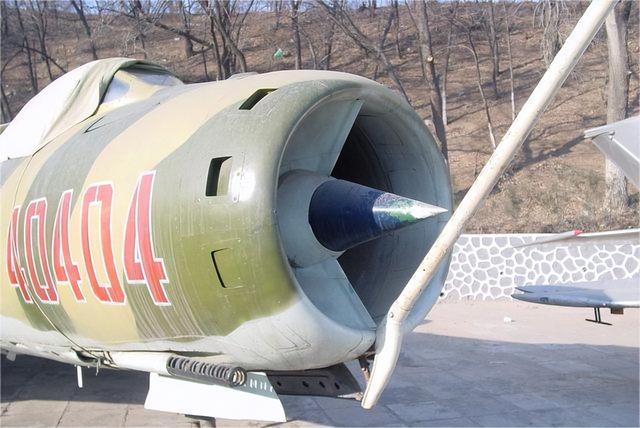-
Yes
-
No

Background
Spoiler
During the mid-1960s, the top speed of the basic J-6 was deemed insufficient at 1,450 km/h. Engineers at the Shenyang aircraft factory then worked on enhancing the fighter, resulting in the creation of the J-6II. This aircraft was developed from the J-6 I prototype, with a notable feature being a large and pointed shock cone in the air intake. Despite speculation that the J-6II was equipped with a fire control radar, the cone was actually an aerodynamic refinement to enhance engine operating conditions. Unlike the J-6I, the cone on the J-6II was adjustable, and four spring-loaded blow-in doors were added on each side of the nose behind the air intake lip. Additionally, the intake splitter was significantly reduced, creating a concave leading edge with upper and lower halves angled at approximately 30° to the vertical. The armament was also modified, with two cannons - one Type 30-1 on the starboard side and one Type 23-1 on the port side - positioned under the nose.
The remodeling was finished ahead of schedule, as planned, after 7 months of rigorous work. On March 25, 1969, Ye Guangrong successfully flew the first J-6II aircraft, No. 3301. In August, the first J-6II performed at Beijing Nanyuan Airport and received high praise from the central leadership. Both J-6IIs produced were delivered to the 24th division in September 1969.
The J-6II made its inaugural flight in 1969, reaching a Mach number of 1.44 and a ceiling of 19,500 meters. Nevertheless, the aircraft’s development was halted due to the issue of excessive tail cover temperatures during flight. Furthermore, the United States ceased bombing northern Vietnam in 1968. By 1969, the U.S. “Firebee” high-altitude unmanned reconnaissance aircraft operations were also winding down. Towards the end of 1969, the U.S. military largely discontinued the use of reconnaissance aircraft to monitor the southwest border of the country. The J-6II, intended for high-altitude reconnaissance missions like the Firebee and U-2, was produced in few numbers.
Not much is known about its service life, although a few models still exist, currently there is one off airport at Datangshan Airport.
Technical Data
Specifications
Crew - 1
Length - 14.64 m
Height - 3.885 m
Wingspan - 9.04 m
Gross Weight - 7,400 kg
Max Takeoff Weight - 8,820 kg
Powerplant - 2 x WP-6A Turbojet Engines (25,5 kN dry, 31.9 KkN wet)
Max Speed - Mach 1.44 (?)
Cruising Speed - 900 km/h
Service Ceiling - 19,500 m
Range - 1,390 km
Range with Auxiliary Fuel Tanks - 2,200 km
Armament
1 x 23-1 23mm Cannon
1 x 30-1 30mm Cannon
2 x 790 L Drop tanks
2 x 57mm Rocket Pods
Images
Spoiler




Sources
Spoiler
(Book) Encyclopedia of Chinese Aircraft (Vol. 3) (Pg19-Pg20)
(Book) Chinese Aircraft China’s Aviation Industry Since 1951. - Page 39
